Frames of the Netherlands
- Nazlı Doğa Erdoğan
- 7 Eyl
- 8 dakikada okunur
August 7 – Eindhoven
We took the train to Eindhoven. After landing, our first stop was the Van Abbemuseum.
The Van Abbe Museum is a significant museum housing modern and contemporary art. Its collection includes works by prominent artists such as Picasso, Kandinsky, and Mondrian. It was truly a beautiful place. I was especially happy to see "Composition VI" in person. Frankly, my favorite part was the wall covered in inscriptions.
After that, we went to the St. Catherine's Church. The bones found beneath the church were quite intriguing. It was also a very large and beautiful church. We lit candles and made wishes. 🕯️✨
Afterward, we rested for a while and visited the Philips Museum. Philips is very important to this region because after the factory was established, urbanization began, and many things developed around this company. Even the region's football team, PSV, is actually a Philips football team.
August 8 – Helmond
The next day, we took the train to Helmond, closer to where we live. We saw Helmond Castle and the Helmond Museum. We also saw a model of the cubic houses in Rotterdam. It was mostly a day of wandering the streets, wandering in and out of alleys.
August 9 – Maastricht
We visited this city with our family this weekend. We first visited a building that had been a passage for years, with images printed on the tiles on its walls. Afterwards, we had coffee in the square and explored the market. People were selling items from their homes. There were old records, music cassettes, embroidery, plates, and much more.
After leaving there, we went to a church that had been converted into a bookstore. Frankly, I think it's a perfect space for a bookstore. Afterwards, we visited the large Saint Sevatius Church. Inside, there were large stones placed on the ground in memory of people.
After visiting there, we crossed the canal and visited a brewery. Frankly, every street looked like it had stepped out of a painting. Instead of placing large signs on shops and restaurants like in Turkey, to avoid damaging the structure of the buildings, people simply hung flags on the side or stuck them on the windows. They did so without damaging the building's structure. It's a very subtle detail that has greatly contributed to the city.
August 14 – Toverland
This is a huge amusement park. First, we rode Felix, a rollercoaster that flips three times. After that, we rode another motorized rollercoaster. Frankly, it was easier to ride. Then, there was another rollercoaster where you could go both upside down and straight down on the water with a boat, which we tried. Finally, we did various small indoor activities. Frankly, it was a really fun day.
August 15 – Beekse Bergen Safari Park
A large safari park. First, we saw cheetahs, zebras, and gazelles by car. Then, we took a short break and walked to see penguins, monkeys, birds, and hippos.
Then, we took a short boat trip along the canal within the park. Just as we got off and were returning to the car, we saw orangutans and other monkey species, cheetahs, hyenas, lions, the largest elephant in the Netherlands, red pandas, and a bear.
When we returned to the car, we saw many other animals on the way out, and most importantly, we fed the giraffes.
August 19 – Rotterdam
We woke up early this morning and took an hour-long train ride to Rotterdam's main train station. Its architecture was intriguing; it opens onto the city like a modern gate, and its steel-clad triangular form leaves a very contemporary impression.
First, we saw the Luxor Theater. Then we walked to the Markthal and visited the cube houses next to it. Markthal is certainly a very interesting place architecturally, but I couldn't quite figure out what the pineapple, garlic, and other fruits above meant. (I later learned that this giant digital artwork, called "Horn of Plenty," was by Arno Coenen.)
The cube houses are certainly visually and architecturally interesting and original. However, my personal opinion is that they are not very comfortable to live in or use. (The concept of these houses, designed by Piet Blom in the 1970s, was based on the idea of "living in a forest." The sloping walls are truly striking inside.)
After this, we went to the Maritime Museum. It was a truly impressive place. Since the Netherlands thrived on maritime trade, ships were very important to them. It was a truly grand museum. (It included 18th-century ship models, exhibits on harbor craftsmanship, and a historic ship undergoing restoration.)
After leaving there, we went to see the Erasmus Bridge. Designed by Ben van Berkel in 1996 and nicknamed "The Swan," the bridge's 139-meter white, leaning pylon has become a true symbol of the city.
Then we arrived at the Depot. Depot Boijmans Van Beuningen holds a special place. As the world's first public art depot, this building, with its mirrored exterior blending into the surroundings, glass exhibitions and restoration studios, and its forest above, combines both art and sustainability. The structure itself was quite intriguing. The inside was even more interesting. The building itself was quite interesting.
We ended our day's visit with the best pasta I've ever had, right across from Central Station.
August 23 – Cologne
We crossed the country in an hour, crossing into Germany and visiting Cologne. We parked at the Rheinauhafen Tiefgarage, Europe's longest underground parking garage at 1.6 km.
Our first stop was the Schokoladenmuseum, which we walked to. In this museum, we couldn't see all the steps involved, from harvesting the cocoa beans from the trees to packaging them and delivering the chocolate to us. It was truly enjoyable and informative to visit. One section of the museum was made of glass, like a boat tournament, and the view was stunning.
After leaving the museum, we walked along the canal to see the Hohenzollernbrücke. This bridge, with its love locks, has been a significant feature since 2008, a tradition.
Our walking route brought us to the Museum Ludwig. It was a museum I'd been longing to visit. I was really looking forward to seeing the works of Warhol, Lichtenstein, and Picasso in person. The building, designed by Peter Busmann and Godfrid Haberer, opened in 1986. Built alongside the Wallraf-Richartz Museum under a "double museum" plan, it was completely dedicated to Museum Ludwig in 1994. The museum's interior and architecture were truly magnificent. My journey through the museum truly broadened my horizons.
Finally, we visited Cologne Cathedral, which UNESCO declared a World Cultural Heritage Site in 1996. This structure, a High Gothic example, began construction in 1248 and was completed 632 years later in 1880. At 157 meters tall, the church is not only the tallest church in Germany but also one of the world's tallest twin towers. Moreover, these twin towers are visible from every corner of the city. The cathedral's interior is as magnificent as its exterior, with 14th-century stained glass and sculptures adding to the impression. As always, this grand cathedral was very crowded when we visited.
August 25 – Amsterdam
Since we were traveling by train, we first saw Central Station and its large square. We could see the tower of the Oude Kerk church in the distance. We walked through the streets in the early morning hours and saw the dancing houses. Some of the houses along the canals in Amsterdam are crooked because they are side by side and the sand beneath them. Noticing and searching for houses with leaning forwards or sides was one of my greatest joys while wandering the streets.
Moreover, seeing one building with a vacant lot next to it, where they had installed staple-like iron supports on its wall to stop it from leaning, and having the chance to examine it was truly valuable.
Another unique detail I noticed about the houses on these streets was that since the stairs in Dutch houses are so steep, they've installed a hook on the front of the building, protruding from the roof, so that instead of having to pull furniture out of the windows, they can be pulled up with a rope. Frankly, I found it very interesting. It's especially nice to see this design in so many buildings.
Even though the houses next to each other are all different, their harmony within themselves gives one a distinct pleasure as one wanders the streets. Furthermore, it's truly incredible that even the buildings used daily are historical, and that their high schools and shopping malls date back to a time before the Orient was a royal palace, and that they have been preserved so well.
As in every city we visited, the Royal Palace on Dam Square, the city hall, was particularly magnificent. This imposing structure was built in the 17th century as a symbol of the Dutch Golden Age, intended to serve as the city hall (Stadhuis). Architect Jacob van Campen undertook the project in 1648 and completed the building in 1655. This structure symbolized the Netherlands' international power and wealth. In 1808, when Louis Bonaparte became King of the Netherlands, the building ceased to be the city hall and became his residence—and the Royal Palace—and remains so today.
Before visiting the palace, we had the chance to see the Oude Kerk on the way. This church, Amsterdam's oldest structure, dates back to the 13th century. Built around 1250 as a small wooden chapel in the city's early settlement, it was dedicated to St. Nicholas by the Bishop of Utrecht in 1306 and converted into a stone church. Over time, it was expanded in the Gothic style as the city grew.
Then we arrived at the Rijksmuseum. This unique building, as impressive inside as it is outside, was designed by Dutch architect Pierre Cuypers. Blending Gothic and Renaissance Revival styles, the building opened in 1885. The predominantly red brick exterior is enriched with natural stone ornamentation. A plan symmetrically shaped around two large courtyards on a central axis allows for both natural light and guides visitors. The bicycle path and archway crossing the axis create both a physical and symbolic connection between the city and the museum. The acoustics it creates make it a popular spot for street artists. The two main towers within the building are reminiscent of Gothic church towers, lending vertical emphasis and a monumental character to the structure. Inside, the high ceilings, vaulted structures, and colorful stained-glass windows create a sense of grandeur borrowed from religious buildings.
Among the works exhibited inside were many important works from the Dutch Golden Age, including Rembrandt van Rijn's *The Night Watch*, Johannes Vermeer's *Woman Pouring Milk*, Frans Hals' *The Merry Knight*, Jan Steen's *The House in Chaos*, Rembrandt's *The Jewish Bride*, Van Gogh's *Self-Portrait*, and Van Gogh's *Blossoming Almond Branch*.
Afterwards, we explored the streets of Amsterdam and concluded our tour with fries.
While there are many striking structures along these streets, I think the most striking was the "Crystal Houses" building, built in 2016 and housing the Hermes store. This building, located on the luxury shopping street P.C. Hooftstraat, was designed by MVRDV, which interprets the traditional Amsterdam facade texture in a modern way.
August 30 – Kinderdijk and Scheveningen
We went to the Kinderdijk region, where it was easier to drive, to see the windmills, which are under UNESCO protection. The 19 windmills here are a combination of wood and stone construction techniques, and some are still used as living spaces. It was a fascinating place to behold and see. It was like something out of a painting.
After leaving there, we went to Scheveningen, the Netherlands' most famous coastal town. This town, located on the North Sea, is connected to the ocean. After sitting and eating somewhere, we rode the Ferris wheel on the pier and had a truly wonderful and enjoyable time.
General Assessment
While many things about the Netherlands impressed me greatly during this trip, I realize that it all stems from a genuine interest in and care for me. Dutch cities offer a wide variety of experiences with their history, architecture, layout, and established systems. I'm so glad I had the opportunity to experience all of this.




















































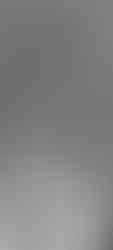


























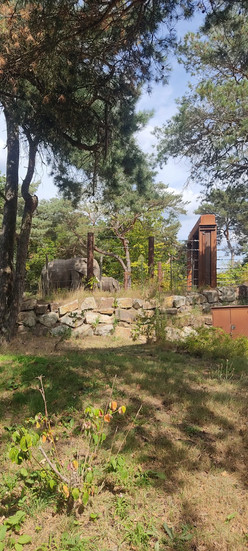































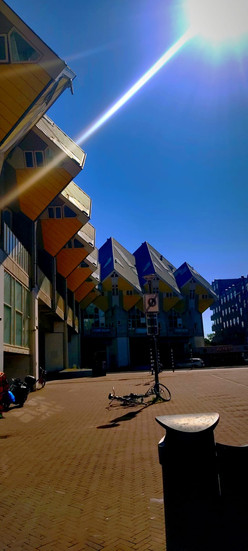




















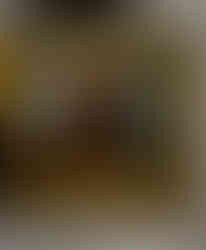































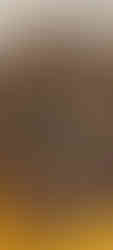





































































































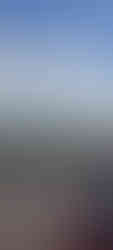


Yorumlar